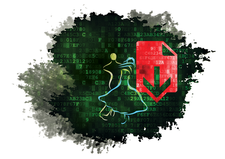Changing from a Samba classic domain to Samba 4
Upgrade or Wait

Samba 4 has been around for more than three years, but some users still shy from it. If you are still sitting on the fence, this tour through some of the new features and capabilities might help you decide whether it is finally time to upgrade.
Samba [1] is the tool of choice for providing Windows-like file and print sharing services on a Linux server. If you only need basic file and print services, switching to Samba 4 it not worth the effort because the new Samba is not so much different. Samba 4 still contains the smbd, nmbd, and winbindd components, although it also has the samba service on-board, which Samba needs for the new features. You will also find some limitations. For instance, Samba 4 reduces access to TDBs (trivial databases) to a minimum.
But, if you use Samba in a classic Windows NT4 domain setting, and if you are willing to delve more deeply into the Windows world, some of the new Samba 4 features might come in handy.
What's New?
The main feature of Samba 4 is the possibility of using a Samba server as a full-fledged replacement for a Windows AD domain controller. Samba 4 supports Windows environments as of Windows 2000.
[...]
Buy this article as PDF
(incl. VAT)
Buy Linux Magazine
Subscribe to our Linux Newsletters
Find Linux and Open Source Jobs
Subscribe to our ADMIN Newsletters
Support Our Work
Linux Magazine content is made possible with support from readers like you. Please consider contributing when you’ve found an article to be beneficial.

News
-
Parrot OS Switches to KDE Plasma Desktop
Yet another distro is making the move to the KDE Plasma desktop.
-
TUXEDO Announces Gemini 17
TUXEDO Computers has released the fourth generation of its Gemini laptop with plenty of updates.
-
Two New Distros Adopt Enlightenment
MX Moksha and AV Linux 25 join ranks with Bodhi Linux and embrace the Enlightenment desktop.
-
Solus Linux 4.8 Removes Python 2
Solus Linux 4.8 has been released with the latest Linux kernel, updated desktops, and a key removal.
-
Zorin OS 18 Hits over a Million Downloads
If you doubt Linux isn't gaining popularity, you only have to look at Zorin OS's download numbers.
-
TUXEDO Computers Scraps Snapdragon X1E-Based Laptop
Due to issues with a Snapdragon CPU, TUXEDO Computers has cancelled its plans to release a laptop based on this elite hardware.
-
Debian Unleashes Debian Libre Live
Debian Libre Live keeps your machine free of proprietary software.
-
Valve Announces Pending Release of Steam Machine
Shout it to the heavens: Steam Machine, powered by Linux, is set to arrive in 2026.
-
Happy Birthday, ADMIN Magazine!
ADMIN is celebrating its 15th anniversary with issue #90.
-
Another Linux Malware Discovered
Russian hackers use Hyper-V to hide malware within Linux virtual machines.

